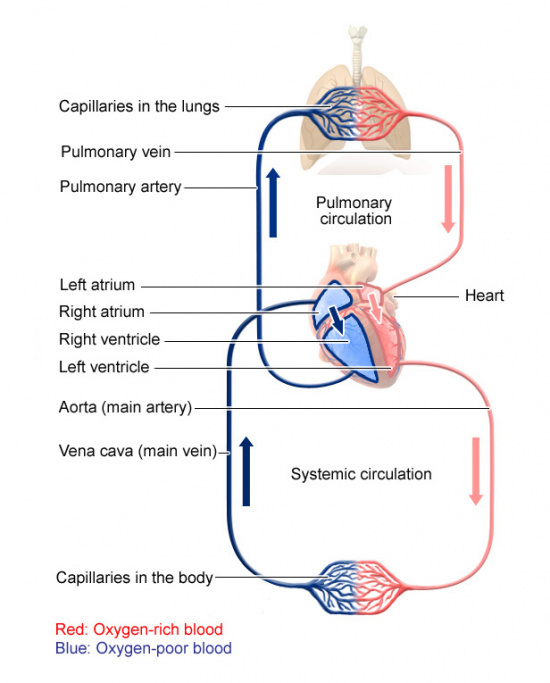The function of the blood circulatory system is to deliver digested nutrients from food and oxygen from the alveoli of the lungs to all cells of the body. The blood circulatory system encompasses the heart and the blood vessels which run through the entire body. The arteries carry blood away from the heart while the veins blood back to the heart. The blood vessel is been likened to a tree where the trunk resembles the main artery (aorta) which branches into large arteries, then to smaller and smaller vessels. They finally branched into the smallest arteries which end up in a network of tiny vessels known as the capillary network.

The blood circulatory system at times is called the cardiovascular system. It works as a simple loop that starts from the heart and ends up in the heart. It can also be considered to be a closed system in that blood does not enter or leave the system during its journey from the heart via the entire body and back to the heart. The system thus ensures a continuous flow of blood through the loop again and again.
Circulation Begins in Your Heart: The blood circulatory system begins in the right atrium of the heart which is located on the upper right-hand side of the heart. The blood thus flows from the right side of the heart and passes through the lungs to get rid of carbon dioxide and pick up oxygen. This oxygenated blood returns to the left side of your heart and ends up in the left ventricle. The left ventricle which pumps blood to the rest part of the body happens to be the strongest part of the heart.
The left ventricle can be considered the most important chamber of the heart when it comes to circulating blood throughout the entire body. It is also the largest of the four chambers and has the capacity of generating enough force necessary to propel blood out of the aorta. And this aorta is the first artery the blood enters as it leaves the heart.
The blood that leaves the heart through the aorta travels from the main artery into larger and smaller arteries and the capillary network. It is in this capillary network that the blood drops off oxygen, nutrients, and other important substances and picks up carbon dioxide and waste products. The blood which is now low in oxygen (deoxygenated blood) is collected via the network capillaries into the veins and starts its journey back to the heart via the right atrium and into the right ventricle.
It is inside the right ventricle that pulmonary circulation begins. Deoxygenated blood is pumped into the pulmonary artery and this branches off into smaller and smaller arteries and capillaries. The capillaries end up forming a fine network around the pulmonary vesicles (i.e. the alveoli). It is in the alveoli that the exchange of carbon dioxide and oxygen takes place. Carbon dioxide is released from the blood into the air via the alveoli while fresh oxygen enters the bloodstream. So anytime we breathe out, carbon dioxide leaves our body while oxygen goes in prompting a new cycle of the systemic circulation.